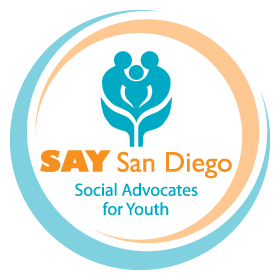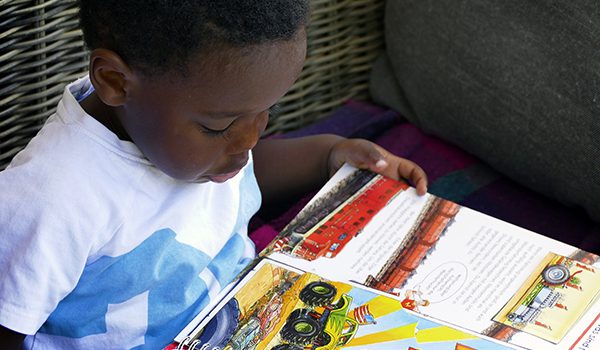From Nancy Gannon Hornberger, CEO
Early Literacy Month is inspired by Dr. Seuss’ birthday in early March, as well as broad-based research and understanding of how early language development and literacy are essential for cognitive growth and learning in young children. What we see every day at SAY San Diego is that children who have lots of engaging experiences with stories, books, songs, poetry and language in general absorb the rhythms and patterns of language and, at surprisingly early ages, begin to imitate the language and gestures they see and hear.
Early literacy – simply stated as everything that children can learn about reading and writing before they can read and write – is a key building block of the evidence based approaches we use in SAY’s First 5 First Steps home visiting, as well as our preschool and parenting support programs. By focusing on fun and natural ways that parents, caregivers and teachers can support early literacy learning, opportunity and equity is enhanced for all children. Proven results from First Steps include:
- Children enter kindergarten ready to learn and the achievement gap is narrowed; children achieve school success into the elementary grades.
- Parents are more involved in their children’s schooling.
- Families are more likely to promote children’s language and literacy.
SAY is also a partner in the successful Readers in the Heights Program of the City Heights Partnership for Children. The project aims to boost summer literacy and prevent learning losses shown to occur in summer. According to the United Way of San Diego County, among the initial group of 277 early elementary students, 84% maintained or improved their reading skills.
Literacy at Home Tips
Literacy learning – the foundation of reading and writing – begins in infancy and is also a lifelong pleasure and journey. And, there is no question that the reading habits of young people in the digital age are changing quickly. Whether a child or teen reads paper or electronics, here are a few ways to keep them engaged at home too:
- Model it – it’s powerful for children of all ages to see adults reading and writing.
- Schedule it – build reading into the daily routine, every day, if possible.
- Read together – read out loud or read the same text.
- Listen in – audio passes time on long car rides and listening to stories is a great brain builder.
- Inspire it – encourage your child to be an author and illustrator.
- Carve it out – create a comfy, quiet place for your child to cuddle up to get lost in a book.
- Value it all – words are everywhere; whether paper or electronic, all text offers chances for discussion and more reading.
- Talk about it – discuss what you’re reading and what they’re reading.
- Keep it light and fun – when possible, offer and honor choices, and avoid too many rules. Kids love to read the same books over and over, to skip to the ending or to stop halfway, and the same is true of writing. It’s all good.

